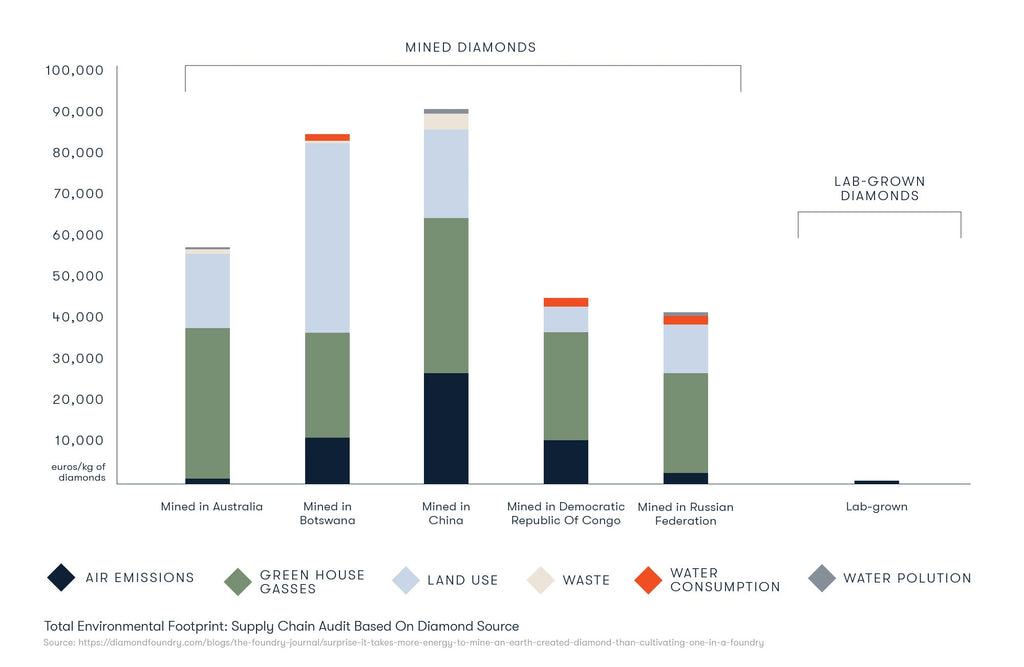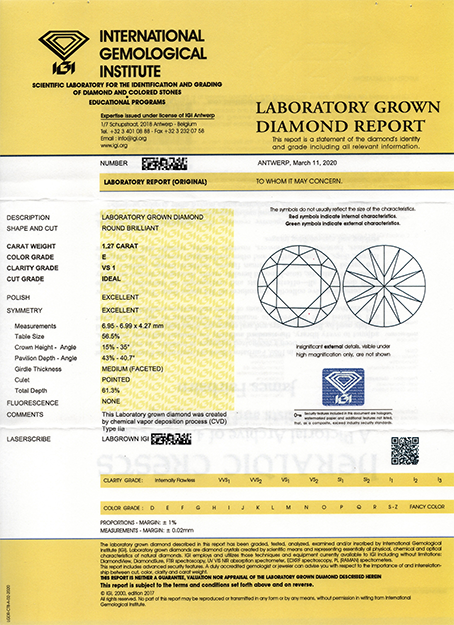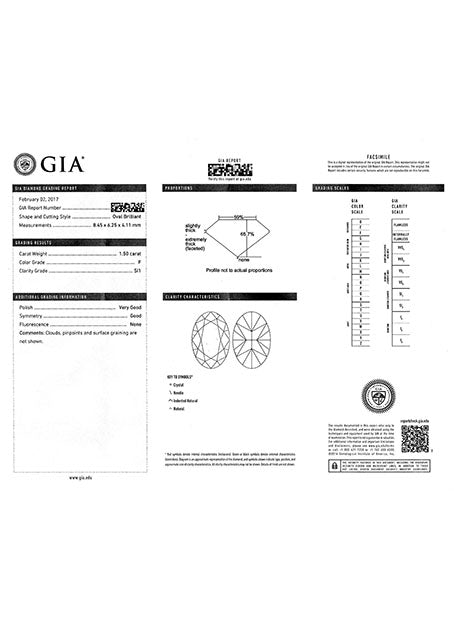LAB-GROWN

A lab-grown diamond is created by using cutting-edge technology that replicates the natural diamond growing process. A lab-grown diamond is a diamond - chemically and physically identical to a mined diamond. They are certified by the same institutions as mined diamonds and awarded the same certificates of validation.
RECYCLED-
ANTIQUE

A recycled-antique diamond is repurposed from dated vintage jewellery. The stones are beautiful often lesser-known cuts, and in perfect condition. Treating something already in circulation with respect by reusing it, is perhaps the most sustainable choice of all.
COMPARING ETHICAL DIAMONDS
LAB-GROWN
A lab-grown diamond is chemically, physically and optically identical to a mined diamond.
RECYCLED-ANTIQUE
A recycled-antique diamond is repurposed from dated vintage jewellery
BENEFITS COMPARISON
Environmental
Footprint
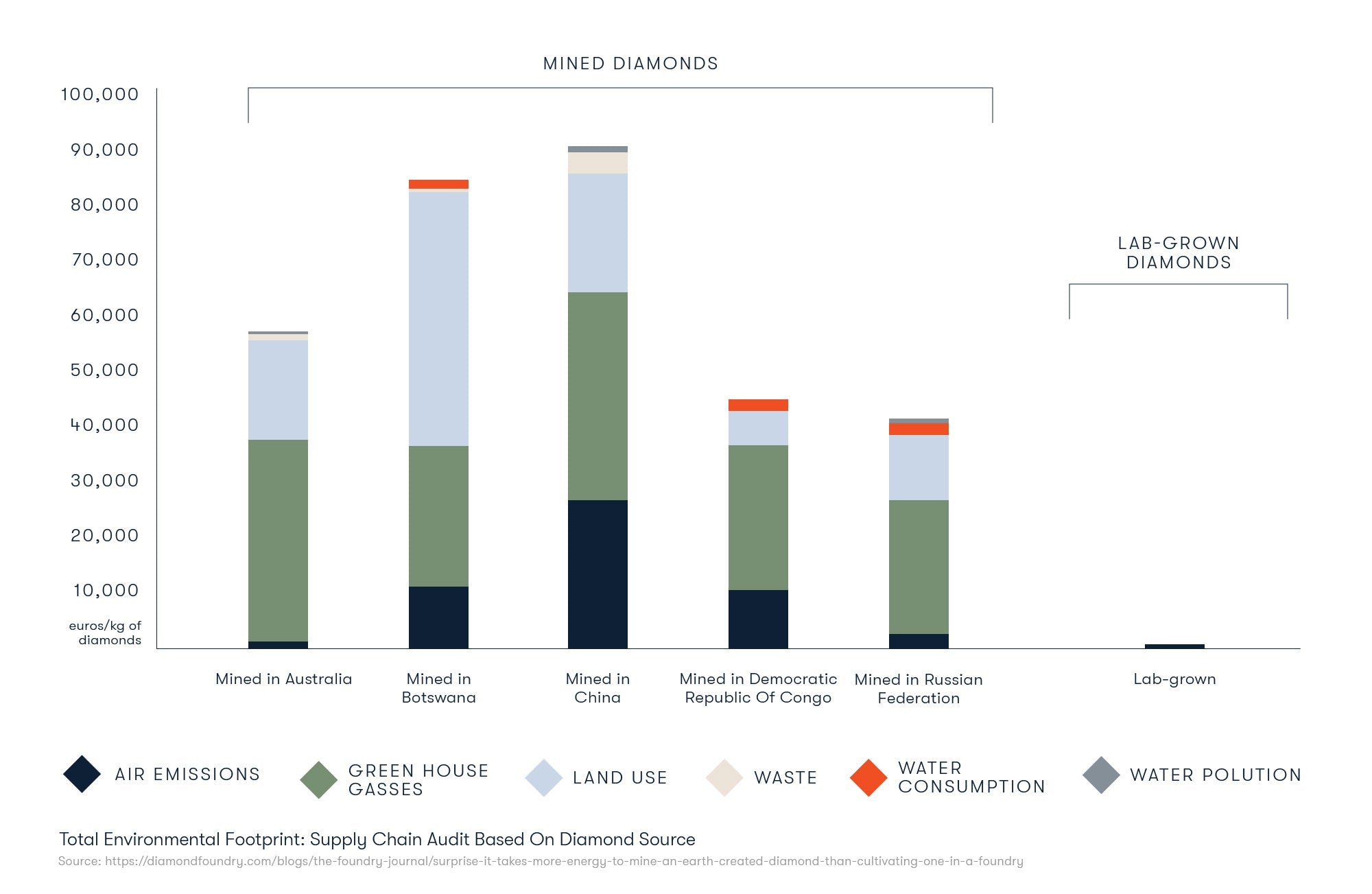
Certificate of Authentication
Our sustainable diamond options are graded and certified, just like a newly mined diamond. At LYLIE, recycled-antique diamonds above 0.5cts are sent to the GIA or IGI labs that specialise in grading below-ground diamonds. Lab-grown diamonds above 0.5cts are sent to the IGI lab as they specialise in grading lab-grown diamonds.
Certificate
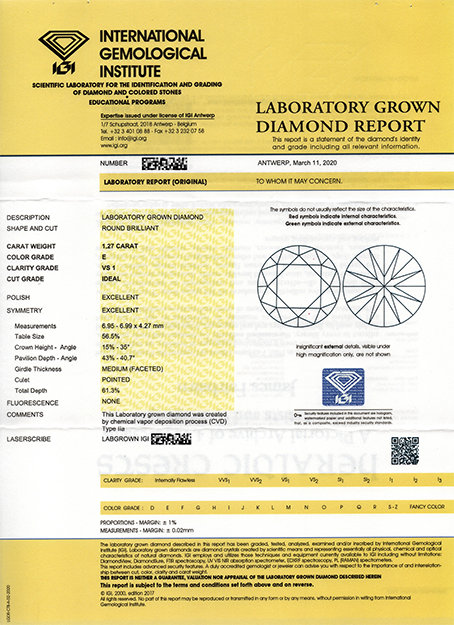
Certificate
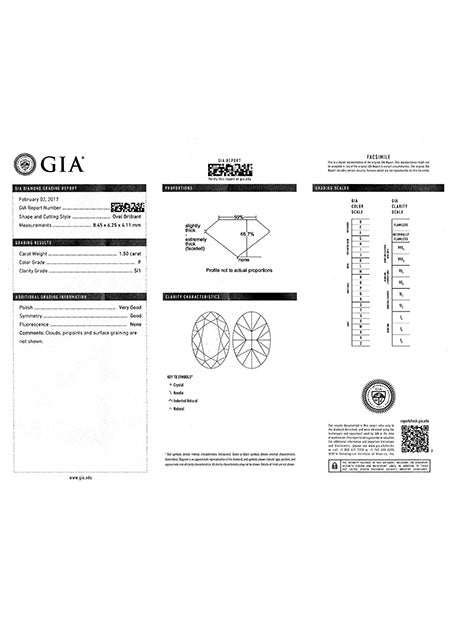
Certificate

THE 4 C’S: Cut, Colour, Carat, Clarity
THE 4 C’S
A guide to help you choose your diamond
MYTH BUSTING
Myth #1 – A lab-grown diamond is not a real diamond
Myth #2 – People can tell the difference
Myth #3 – Women don’t want lab-grown
Myth #4 – Mined diamonds are traceable
Myth #5 – I need family jewellery to opt for a recycled-antique diamond







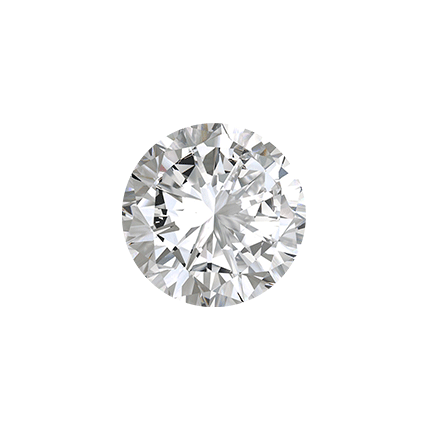
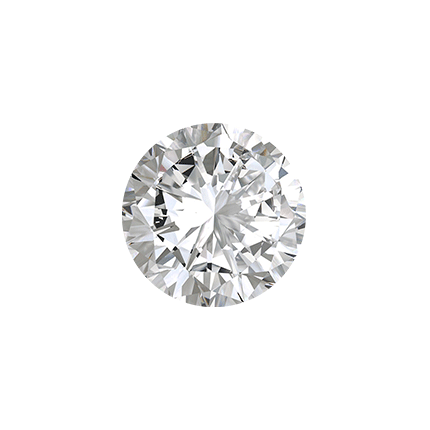
 Environmental impacts including soil erosion, displaced earth, deforestation, and ecological devastation
Environmental impacts including soil erosion, displaced earth, deforestation, and ecological devastation
